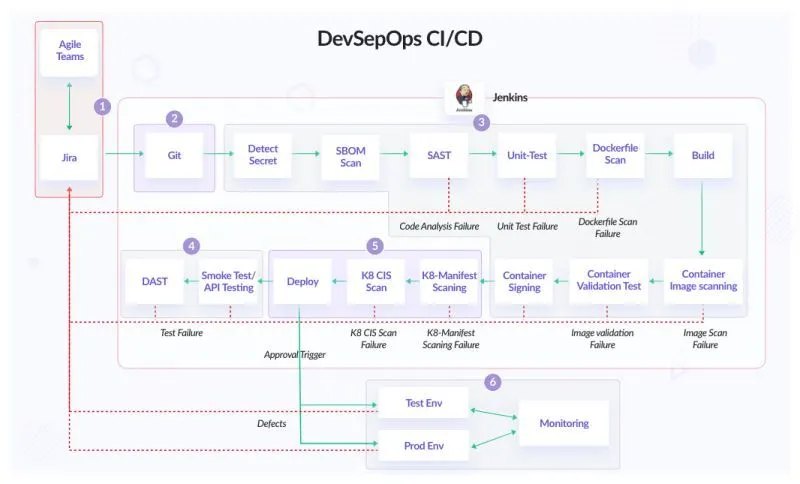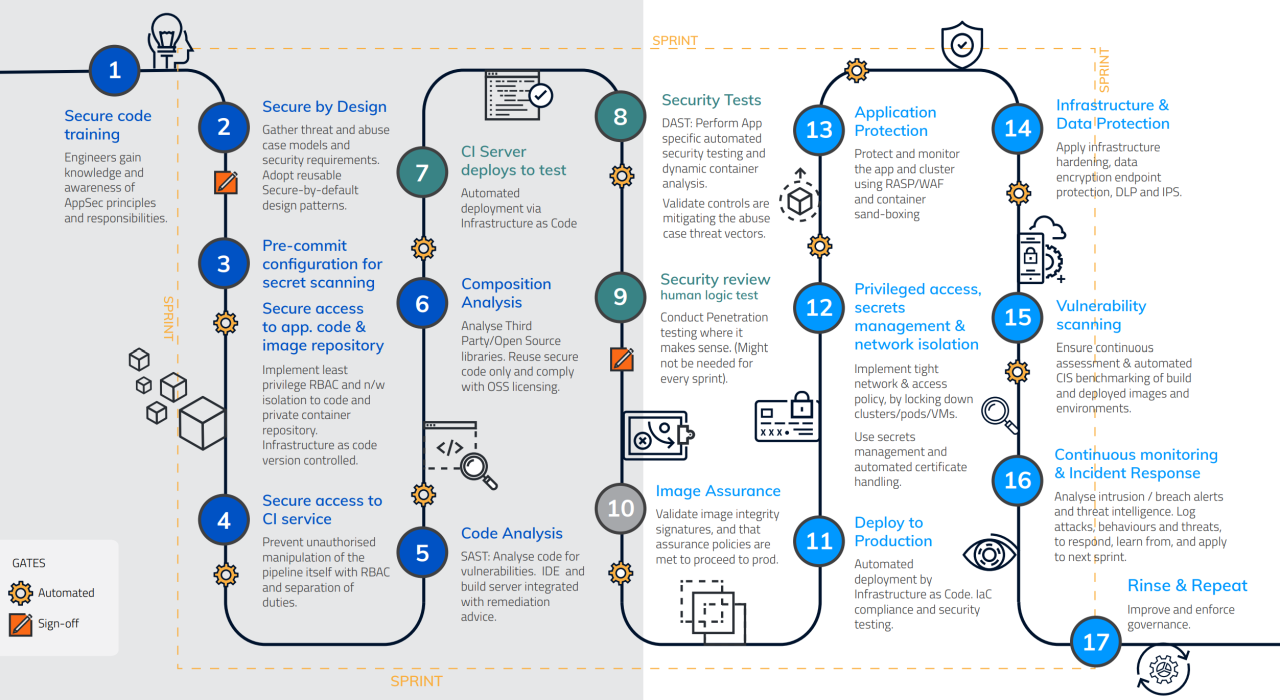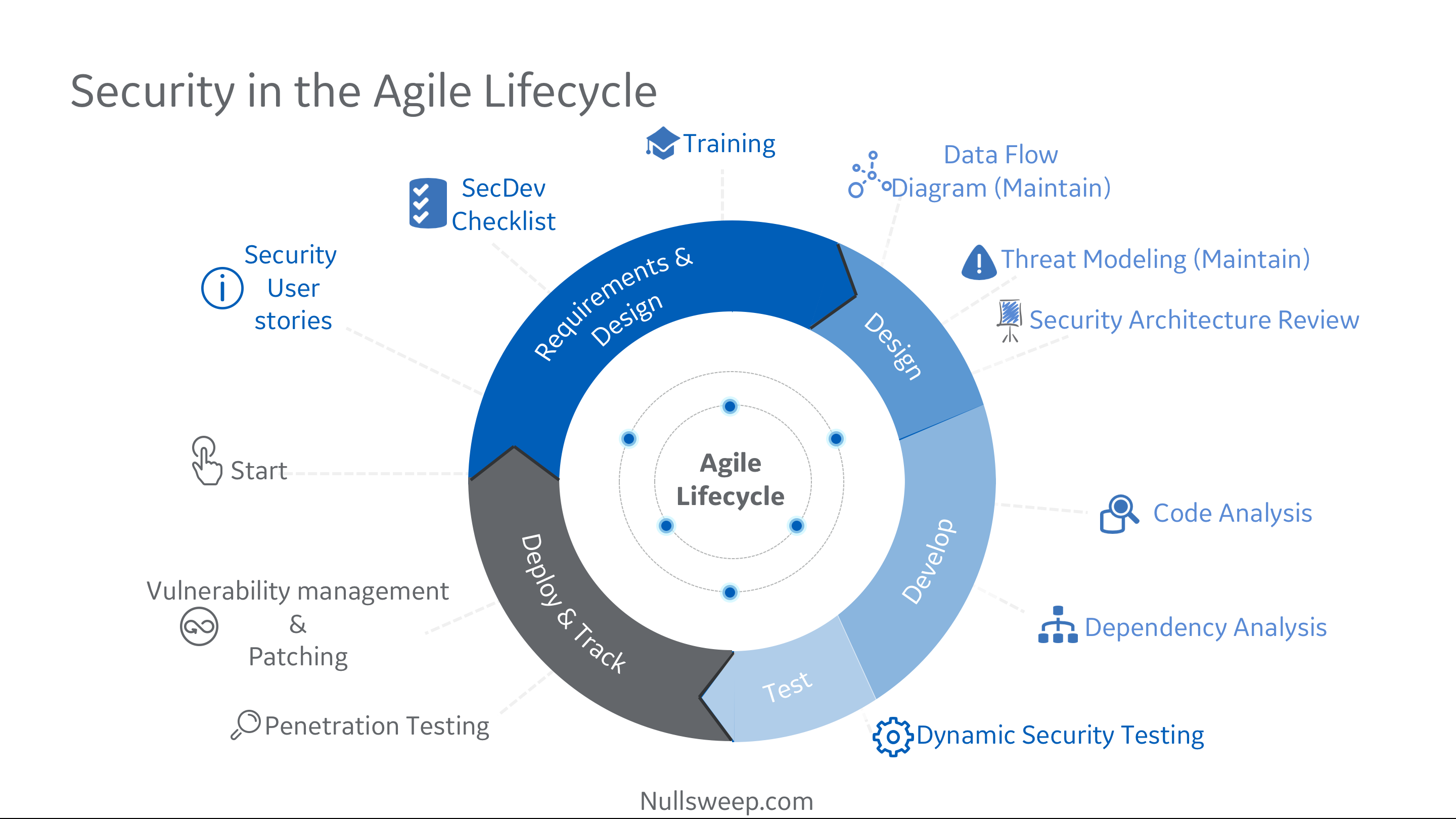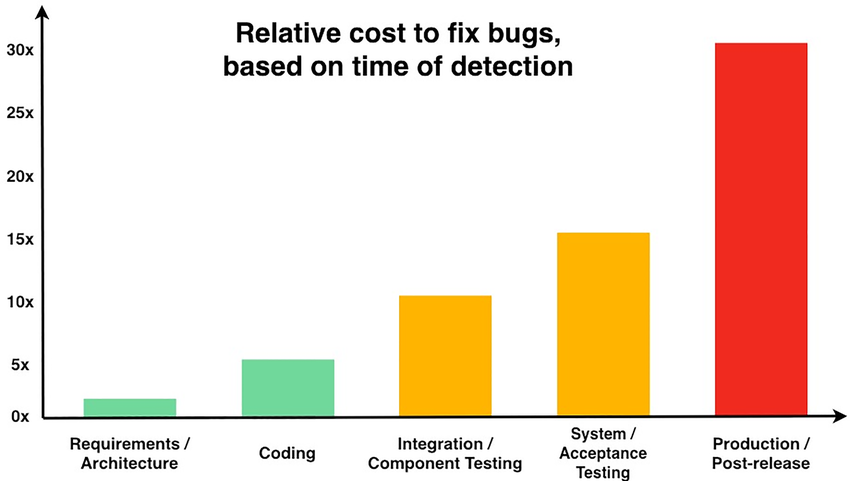In today's rapidly evolving digital landscape, organizations face an increasingly complex challenge: delivering software faster while maintaining robust security standards. Traditional development approaches often position speed and security as competing priorities, creating bottlenecks that delay releases or leave vulnerabilities exposed. DevSecOps emerges as the solution to this dilemma, fundamentally transforming how organizations approach software development by integrating security practices throughout the entire development lifecycle.
DevSecOps benefits extend far beyond simple security improvements, offering organizations a comprehensive framework that enhances operational efficiency, reduces costs, and strengthens competitive positioning. By embedding security considerations from the earliest stages of development, organizations can achieve the dual objectives of rapid delivery and comprehensive protection. This integrated approach has become essential as cyber threats continue to evolve and regulatory requirements become more stringent across industries.
1. Security Baked into the CI/CD Pipeline
The foundation of effective DevSecOps lies in embedding security directly within the CI/CD pipeline, shifting security from a late-stage check to a core element of the development process. This shift-left approach allows teams to identify and remediate vulnerabilities when fixes are most cost-effective and least disruptive. According to IBM’s Cost of a Data Breach Report 2023, the cost of fixing a vulnerability in production can be 30x higher than addressing it during development.
Modern CI/CD practices integrate automated tools such as static application security testing (SAST), dynamic application security testing (DAST), and software composition analysis (SCA) at multiple stages of code commits, build processes, and deployments. The GitLab 2024 Global DevSecOps Report found that 53% of teams run SAST scans, 44% run DAST, and nearly 50% scan containers and dependencies, showing that early detection is becoming standard practice across industries.

Example of a DevSecOps CI/CD pipeline with integrated security gates (Source: Jenkins/GitLab ecosystem)
The impact is not limited to reduced risk. By catching issues earlier, teams minimize last-minute rework that can delay releases. The DORA Accelerate State of DevOps Report 2023 highlights that high-performing teams with automated security integrated into CI/CD achieve both higher deployment frequency and shorter lead times compared to traditional approaches. In other words, security becomes an enabler of speed, not a barrier.
Real-world examples reinforce this benefit. A leading European bank that integrated SAST and dependency scanning into its CI/CD pipeline reduced its vulnerability backlog by 40% within six months, while maintaining bi-weekly release cycles. This demonstrates how embedding security directly into development workflows can simultaneously strengthen defenses and accelerate delivery.
2. Faster Releases Through Security Automation
One of the most powerful DevSecOps benefits is the ability to accelerate delivery by automating security processes that once created bottlenecks. Traditional approaches often rely on manual code reviews, compliance approvals, and reactive incident response, which can delay releases by days or weeks. Security automation replaces these manual tasks with continuous, machine-driven checks that operate at the speed of modern development cycles.
Automation covers vulnerability scanning, policy enforcement, and compliance validation at every stage. The GitLab 2024 Global DevSecOps Report found that 56% of organizations now use automated security testing tools, and those that automate show significantly faster development throughput. Similarly, the DORA Accelerate State of DevOps Report 2023 shows that elite performers with high levels of automation deploy software up to 973x more frequently and recover from incidents 6,570x faster than low performers.
The financial ROI is equally compelling. IBM’s Cost of a Data Breach Report 2023 notes that organizations with extensive security automation saved an average of $1.76 million per breach compared to those without automation. This demonstrates how security automation reduces both the cost and duration of incident response, while simultaneously freeing development teams to focus on innovation.
Industry examples underscore this impact. For instance, a U.S.-based fintech company that adopted automated container scanning and policy-as-code reduced its average release cycle from two weeks to three days, without increasing its security risk profile. By embedding automation into its pipelines, the company achieved faster time-to-market while strengthening compliance readiness for PCI DSS.

Security automation embedded in CI/CD for faster, safer releases (Source: Continuous Integration/Deployment model)
In practice, security automation transforms the perception of security from a slowdown to an accelerator. By minimizing rework, reducing manual overhead, and continuously monitoring applications, organizations can release more frequently with confidence that every deployment meets both performance and security standards.
3. Compliance by Design for Regulated Industries
For organizations in heavily regulated sectors such as healthcare, finance, or e-commerce, compliance requirements have traditionally created both risk exposure and delivery delays. Manual audits, retrofitting controls, and last-minute security reviews not only increase the chance of regulatory violations but also slow down release cycles. DevSecOps addresses this challenge by embedding compliance by design directly into development workflows, ensuring that applications are compliant from the start.

Compliance by design embedded through DevSecOps security controls (Source: Accelerra)
This integrated approach uses automated policy enforcement, continuous compliance monitoring, and real-time audit trails aligned with standards like ISO 27001, SOC 2, HIPAA, and GDPR. The result is twofold: fewer security gaps that regulators could penalize, and faster releases since compliance checks run continuously within the CI/CD pipeline rather than as an external gate at the end.
The cost case is compelling. IBM’s Cost of a Data Breach Report 2023 found the global average cost of a breach was $4.45 million, with regulated industries like healthcare experiencing costs nearly double that figure. In addition, non-compliance fines under GDPR can reach up to 4% of global annual revenue. By embedding compliance controls early, organizations avoid these risks while reducing the overhead of preparing for audits. According to GitLab’s 2024 DevSecOps Report, teams with compliance automation spent 60% less time on audit preparation compared to those relying on manual processes.
A strong industry example comes from a North American healthcare provider that adopted DevSecOps with automated HIPAA compliance checks. Instead of quarterly audit sprints that used to delay releases, the provider generated continuous audit evidence as part of its pipeline. This reduced audit preparation time by 70% while enabling bi-weekly feature releases proving that compliance by design can simultaneously reduce risk and accelerate delivery.
4. Agile Security that Scales with Teams
As organizations scale their development capabilities and adopt agile methodologies, traditional security approaches often become a bottleneck. Manual reviews or centralized approvals slow down sprints, while fragmented processes create inconsistent protection across teams. DevSecOps solves this by embedding agile security directly into workflows, ensuring security scales with teams without compromising delivery speed.

Security integrated into the agile lifecycle, from user stories to testing and deployment (Source: Nullsweep)
In practice, agile security means transforming security requirements into user stories, integrating security testing into the definition of done, and automating threat modeling within sprint cycles. This approach keeps security aligned with agile ceremonies planning, daily standups, retrospectives so protection evolves with each iteration rather than lagging behind.
The data confirms the benefits. According to the DORA Accelerate State of DevOps Report 2023, elite performers with integrated DevSecOps practices experience 208x more frequent deployments and 106x faster lead times than low performers. At the same time, GitLab’s 2024 Global DevSecOps Report found that 75% of security professionals believe embedding security in agile processes improves collaboration and reduces friction between development and security teams. This shows that aligning security with agile not only mitigates risks but also accelerates software delivery.
Real-world experience illustrates the point. A global SaaS provider integrated security-as-code into its agile development process, using automated dependency scanning and runtime security tests during each sprint. Within six months, the company cut its average remediation time for critical vulnerabilities from 21 days to just 3 days, while maintaining weekly release cadences. The result was stronger protection against emerging threats and faster time-to-market for new features.
By ensuring that security practices evolve at the same pace as agile development, organizations can achieve a balance that historically seemed impossible: stronger protection with faster releases. Agile security turns security from a drag on velocity into a core driver of scalable, secure innovation.
5. Reduced Long-Term Risks and Costs
The long-term DevSecOps benefits go beyond immediate vulnerability reduction. By embedding robust security throughout the lifecycle, organizations significantly lower the probability and impact of breaches while improving operational efficiency and brand resilience.

Cost to fix bugs increases dramatically from dev to production (Source: IBM Report)
The financial stakes are high. IBM’s Cost of a Data Breach Report 2023 shows the global average cost of a breach reached $4.45 million, with breaches in healthcare averaging $10.93 million. Verizon’s 2024 Data Breach Investigations Report highlights that over 80% of breaches involve exploited vulnerabilities or human error, many of which could have been prevented by earlier detection and automation. DevSecOps mitigates these risks by integrating continuous monitoring, automated incident response, and proactive patching into development workflows.
The ROI is clear. Organizations with extensive automation and mature DevSecOps practices saved an average of $1.76 million per breach (IBM 2023). Beyond direct savings, early detection reduces emergency “firefighting,” helping teams avoid disruptive hotfixes that slow future development. In practice, this means fewer crisis patches, more stable roadmaps, and faster delivery of new features. Security doesn’t just prevent losses, it accelerates innovation by removing hidden costs.
Consider a case from the financial services sector: a major Asian bank integrated DevSecOps into its mobile app development program. By automating vulnerability scanning and response, the bank reduced its incident response time from five days to under 12 hours, while maintaining monthly release cycles. The improvement not only cut potential breach costs but also increased customer trust, allowing the bank to expand its digital offerings faster than competitors. This trend echoes broader transformations in digital banking, where technologies like AI chatbots are reshaping customer engagement in Singapore’s financial sector, highlighting the need for both speed and security as core pillars of innovation.
Ultimately, reducing long-term risks through DevSecOps is not just about cost avoidance. It enables organizations to build resilient systems and reputations that support sustainable growth. When security incidents are minimized and handled efficiently, teams regain time and resources to focus on value creation, ensuring competitive advantage in both protection and speed.
Integrating DevSecOps from the Start
At Twendee, we believe that security and delivery speed cannot be separated. Instead of treating security as a final checkpoint, we integrate DevSecOps from the very beginning, making it a foundation of the entire software development lifecycle. This approach enables our clients to reduce security risks while maintaining rapid product launches.
In our custom software development practice, we design CI/CD pipelines with built-in automated security layers: from static code analysis and dependency scanning to policy-as-code. At the same time, Twendee’s security testing experts run continuous testing to ensure systems comply with standards such as ISO, SOC 2, GDPR, and HIPAA. As a result, security is no longer a burden slowing down projects, but a seamless enabler that accelerates delivery.
The value is clear: risks are detected and resolved early, saving significant costs compared to fixing issues late in production. Emergency hotfixes are drastically reduced, keeping development roadmaps stable and allowing clients to bring new features to market faster without compromising reliability.
Through projects across finance, healthcare, and e-commerce, Twendee has proven that when DevSecOps is embedded from day one, organizations achieve both sustainable security and competitive speed. This is the commitment we bring to every partner we work with.
Conclusion
Integrating security throughout the development lifecycle is far more than a best practice, it is a strategic necessity. The DevSecOps benefits are evident across every stage: embedding controls within CI/CD pipelines reduces vulnerabilities early, security automation accelerates delivery, compliance by design lowers regulatory risk, agile security scales protection with teams, and long-term cost savings strengthen organizational resilience. Together, these outcomes enable businesses to innovate quickly while staying protected against an increasingly hostile threat landscape.
Organizations that adopt DevSecOps consistently report improved release velocity, stronger security postures, and reduced compliance overheads. More importantly, they gain a durable competitive edge by ensuring that innovation is never slowed down by security gaps or compliance failures. In today’s digital economy, speed without security is reckless and security without speed is unsustainable. DevSecOps is the only approach that truly delivers both.
At Twendee, we bring this philosophy to practice. By combining custom software development with comprehensive security testing, we integrate DevSecOps from the first line of code to production deployment. Our teams design pipelines, automate testing, and enforce compliance so that every release is faster, safer, and more reliable. For businesses seeking to innovate with confidence, Twendee is the partner that ensures security and speed go hand in hand right from day one. Discover how Twendee can support your transformation by connecting via Facebook, Twitter, and LinkedIn.
